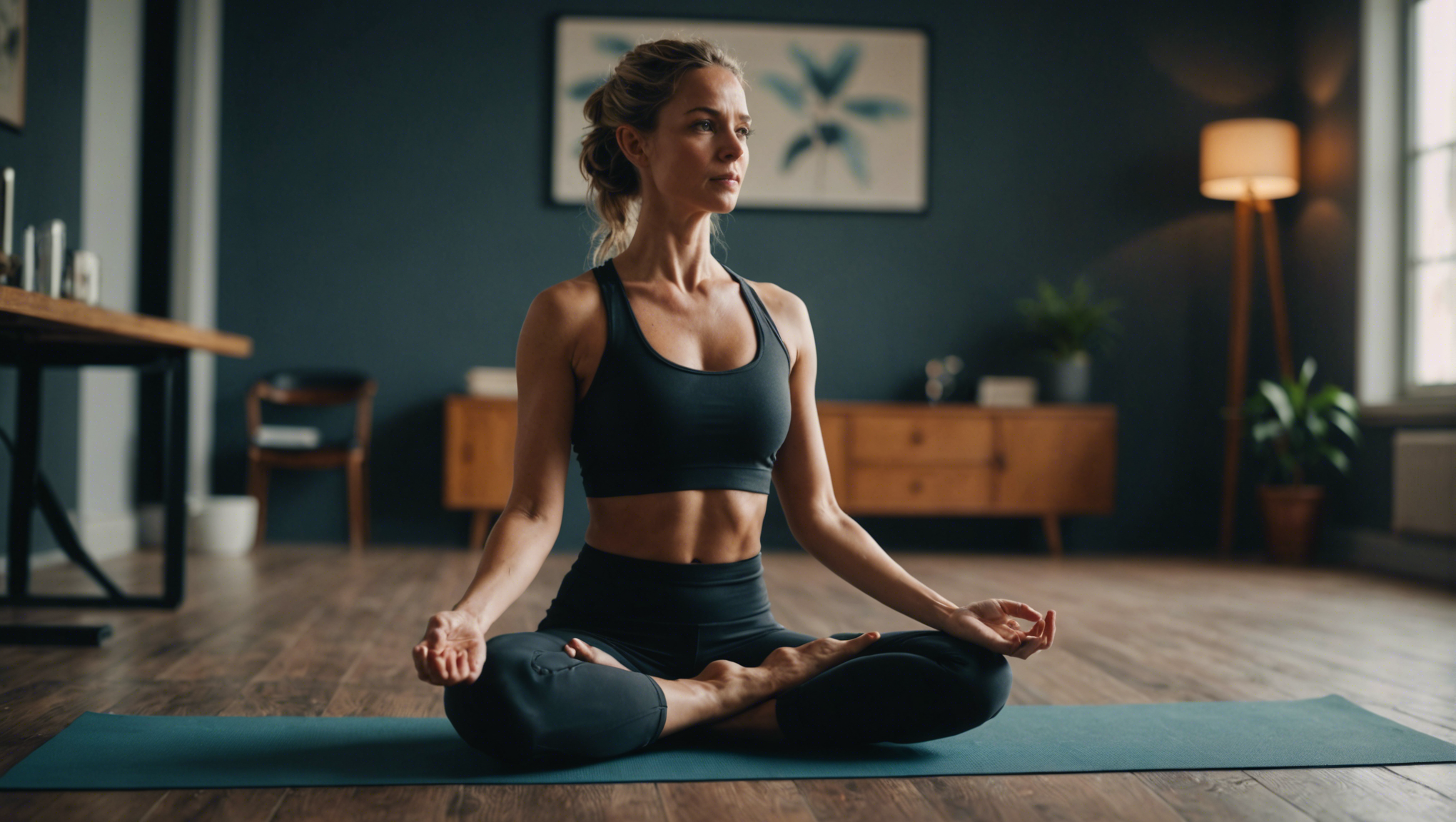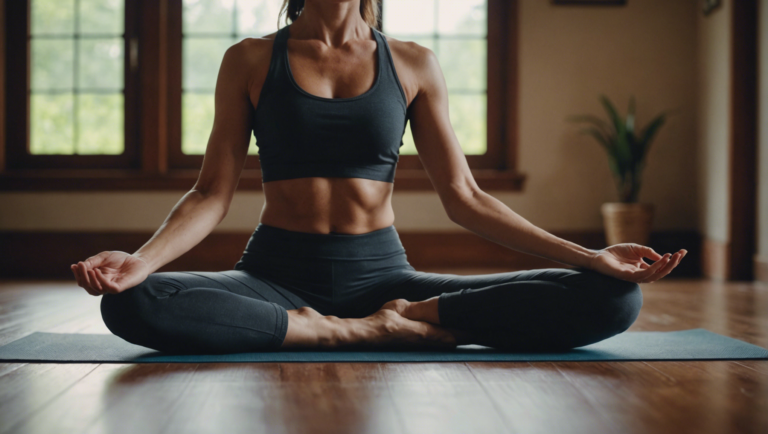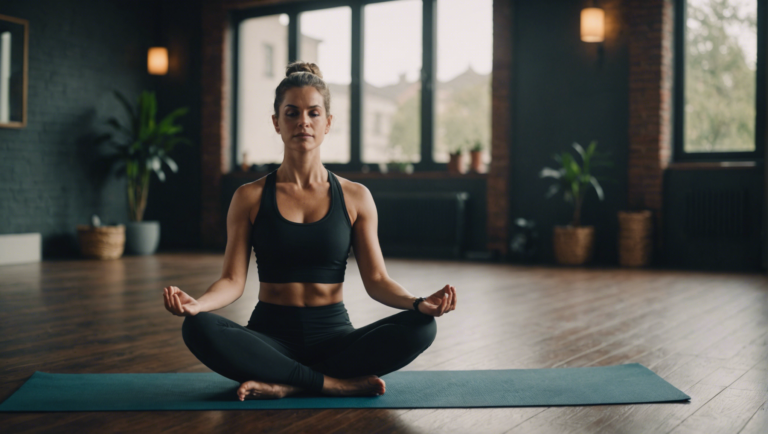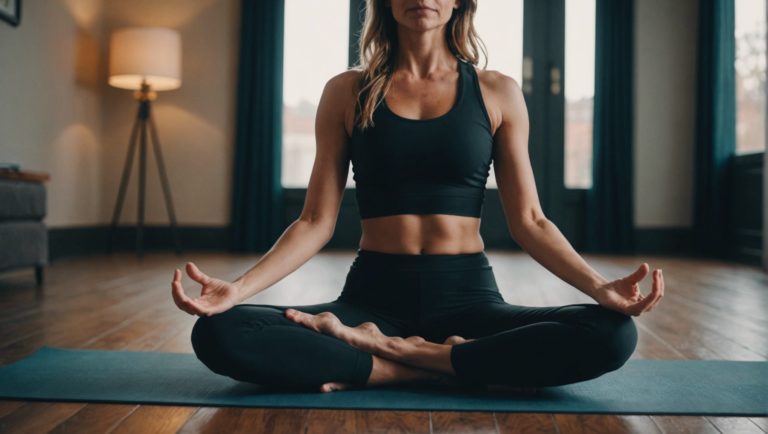Identifying Yoga Poses: Which Pose Is Displayed In This Picture?
Deciphering Yoga Poses through Visuals: A Guide to Understanding the Pose in the Picture
Understanding Yoga Poses Through Visuals
Yoga, an ancient practice rooted in Indian philosophy, has become a global wellness trend, resonating with millions who seek physical health and mental clarity. Identifying and understanding yoga poses through visuals is not just about recognizing the shape or form of the pose; it’s about comprehending the nuances that make each asana (pose) unique and beneficial. This guide aims to deepen your yoga practice by helping you recognize and appreciate the details in yoga pose images, fostering a more informed and mindful approach to yoga.
Enhancing Your Practice with Visual Identification
The ability to visually identify yoga poses contributes significantly to the effectiveness of your practice. Recognizing a pose through a picture not only helps in accurately replicating the asana but also in understanding the alignment, engagement, and intention behind it. This skill becomes especially crucial in a self-led practice or when utilizing digital yoga platforms, where direct instructor feedback might not be available.
The Importance of Alignment
Alignment in yoga is paramount. Incorrect alignment can lead to strain and injury, while proper alignment ensures that you reap the full benefits of each pose. Visual guides or pictures serve as an excellent tool for refining alignment, showcasing the ideal positioning of limbs, torso, and head. By carefully observing the alignment depicted in yoga pose visuals, practitioners can adjust their own postures accordingly, enhancing both safety and effectiveness in their practice.
Engaging the Correct Muscles
A common challenge among yoga practitioners is understanding which muscles to engage or relax in a given pose. Images of yoga poses can demystify this aspect by highlighting active and passive areas in the body for specific asanas. Some visuals may even include annotations or color-coding to denote muscle engagement, providing a clearer understanding of the pose’s biomechanics. This insight helps in achieving deeper stretches, greater strength, and improved endurance, all while minimizing the risk of injury.
Understanding the Energetic and Emotional Layers
Yoga transcends physical exercise; it is a holistic practice that intertwines the physical with the energetic and emotional. Certain poses are known for their ability to stimulate specific energy centers (chakras) in the body or to evoke particular emotional responses. High-quality visuals of yoga poses, accompanied by expert commentary, can shed light on these subtle aspects, enriching the practitioner’s experience. For instance, images depicting the Heart-Opening Backbend might explore not only the physical execution but also its capacity to enhance emotional vulnerability and openness.
Props and Modifications
One of the beauties of yoga is its adaptability to different bodies and abilities. Visual guides that showcase yoga poses with props (such as blocks, straps, and bolsters) or modifications can be incredibly helpful. They demonstrate how to tailor poses to individual needs, making yoga more accessible and enjoyable for everyone. For beginners or those with physical limitations, these visuals serve as a reminder that yoga is a personal journey and that every pose can be modified to suit one’s current state.
In our fast-paced world, visual content has become a key medium for learning and exploration. For yoga practitioners, visual identification of poses offers a rich resource for enhancing their practice, fostering a deeper connection to the art and science of yoga. By focusing on alignment, muscle engagement, energetic implications, and the thoughtful use of props, visual guides empower individuals to practice yoga safely, mindfully, and joyfully.
Navigating the world of yoga through visuals can transform your practice from mere exercise to a profound journey of self-discovery and wellness. Whether you’re a seasoned yogi or a curious beginner, taking the time to study and understand yoga poses through pictures is an investment in your physical and spiritual well-being.
The Connection Between Yoga Pose Alignment and Health Benefits
The subtle intricacies of yoga pose alignment are not just for the aesthetic appeal or the pursuit of the perfect pose. Beyond the surface, these alignments are deeply intertwined with the holistic health benefits that yoga offers. Let’s delve into how precise positioning in yoga poses can enhance well-being, improve physical health, and foster mental clarity.
Exploring the Link between Alignment and Physical Health
The cornerstone of yoga practice is the emphasis on alignment. This focus ensures that each pose is executed in a manner that is anatomically correct and suitable for the practitioner’s body, thereby maximizing the health benefits and minimizing the risk of injury. Proper alignment is crucial in distributing weight evenly, allowing the muscles to work in harmony and the joints to move freely without strain.
For instance, in a seemingly simple pose like Tadasana (Mountain Pose), correct alignment—feet hip-width apart, spine elongated, shoulders relaxed but engaged—acts as a foundation for improving posture and strengthening the muscles of the legs and core. This attention to detail in alignment translates across more complex poses, enhancing muscular strength, flexibility, and joint health.
The Role of Alignment in Enhancing Flexibility and Strength
Alignment does more than just prevent injury; it also facilitates the deeper stretching of muscles and the strengthening of the body uniformly. When poses are executed with the correct alignment, the body is able to stretch and strengthen optimally. For example, in a pose like Uttanasana (Standing Forward Bend), aligning the hips over the ankles and elongating the spine enables a deeper hamstring stretch while simultaneously strengthening the thighs and knees.
This principle of alignment fostering flexibility and strength is evident in balancing poses such as Vrksasana (Tree Pose), where the proper alignment of the foot on the inner thigh and hips squared to the front not only helps in maintaining balance but also strengthens the standing leg and opens the hips.
The Connection Between Proper Alignment and Stress Reduction
The benefits of proper yoga pose alignment extend beyond the physical to the mental and emotional realms. Alignment aids in the optimal flow of energy throughout the body, which can significantly impact mental well-being. For example, in poses like Balasana (Child’s Pose), correct alignment—forehead resting on the ground, hips sitting back on the heels—allows for a gentle stretch in the back and shoulders, areas where many people hold stress. This posture promotes relaxation and can aid in stress relief.
Further, alignment-focused practices encourage mindfulness and body awareness, which are key components in reducing stress and anxiety levels. As practitioners focus on the intricacies of alignment in each pose, they become more present and connected with their bodies, allowing the mind to shift away from stressors.
Supporting Holistic Well-Being Through Mindful Alignment
Mindful alignment into yoga practice supports not just physical health but also emotional and mental well-being. As practitioners learn to listen to their bodies and adjust their poses to find the optimal alignment, they develop a deeper sense of self-awareness and self-care. This mindful practice can lead to improved body image, increased confidence, and a more compassionate relationship with oneself.
Moreover, the discipline and focus required to maintain proper alignment can be transformative, offering lessons that extend beyond the yoga mat. The patience, attentiveness, and persistence cultivated in yoga practice can improve various aspects of one’s life, contributing to overall happiness and satisfaction.
The symbiotic relationship between yoga pose alignment and health benefits is undeniable. Proper alignment ensures the physical safety of practitioners while deepening the intensity of the poses for maximum benefit. It also acts as a bridge to mental and emotional well-being, making yoga a comprehensive tool for holistic health. As individuals continue to explore and understand the significance of alignment in their practice, they unlock the full potential of yoga as a powerful means of enhancing their overall well-being.
Essential Tools and Apps for Identifying and Learning Yoga Poses
Yoga, an ancient practice renowned for its physical, mental, and spiritual benefits, has seen a modern resurgence. The digital age has blessed us with a myriad of tools and apps designed to enhance our understanding and proficiency in yoga. These digital aides range from virtual pose libraries to in-depth tutorials, making yoga accessible to beginners and providing a depth of knowledge for advanced practitioners.
Discovering the Right Yoga App for Your Practice
Navigating the plethora of yoga apps available can be overwhelming. However, focusing on your specific needs, whether you’re seeking to learn new poses, deepen your practice, or understand the nuances of yoga, can guide you to the right choice. Apps like Down Dog and Yoga Studio offer customizable yoga sessions, catering to your level of expertise, available time, and preferred style of yoga. They stand out for their user-friendly interfaces and comprehensive pose libraries, making them indispensable for both newcomers and seasoned yogis.
The Role of Augmented Reality in Learning Yoga Poses
Augmented reality (AR) has revolutionized how we learn and perfect yoga poses. Apps utilizing AR, such as AR Yoga Studio, project an overlay of poses onto your surrounding environment, offering a unique visual guide. This technology allows for a more immersive learning experience, helping practitioners understand the spatial dynamics of each pose. By enabling users to visualize and align their postures with the projected pose, AR apps are significantly improving the accuracy and safety of yoga practice at home.
Utilizing Social Platforms for Yoga Learning
Social media platforms, though not designed specifically for yoga education, have emerged as valuable resources for learning yoga poses. Instagram and YouTube are replete with yoga instructors and enthusiasts sharing tutorials, tips, and sequences. These platforms offer the advantage of community—hearing from a multitude of voices and experiences can provide a richer, more diverse understanding of yoga. Channels and accounts dedicated to yoga often share detailed breakdowns of poses, offering insights into common mistakes and proper alignments.
The Importance of Safety and Personalization in Yoga Practice Apps
When choosing an app for yoga practice, two critical factors to consider are safety and personalization. The best apps not only guide you through each pose but also emphasize correct posture and breathing techniques to avoid injury. Look for applications that offer variations and modifications of poses to accommodate different skill levels and physical limitations. Personalization is also key; the app should be able to adapt to your progress, recommending more challenging poses as you advance.
Integrating Wearable Technology for Enhanced Yoga Practice
Wearable technology, such as fitness trackers and smartwatches, has the potential to enhance your yoga practice massively. These devices can monitor your heart rate, track your breathing patterns, and even guide your meditation sessions, providing a holistic view of your practice’s physical and mental aspects. Some wearables are designed to offer feedback on your form or remind you to adjust your breathing, making them a valuable companion for both practice and meditation.
Books and eBooks: The Undying Tools for Learning Yoga Poses
In an age dominated by digital solutions, traditional resources like books and eBooks remain invaluable for learning yoga poses. Renowned texts such as "Light on Yoga" by B.K.S. Iyengar offer in-depth analyses of poses (asanas), breathing techniques (pranayama), and the philosophy behind yoga. eBooks, leveraging the convenience of digital access, often come enriched with multimedia elements such as video tutorials and interactive diagrams, bridging the gap between traditional and modern learning methods.
In the journey of mastering yoga poses, the fusion of ancient wisdom with modern technology offers an unparalleled path to progress. From AR apps enhancing the realization of asanas to wearable devices tracking and refining your practice, technology has become an essential component of contemporary yoga. Yet, amidst this digital abundance, the timeless teachings preserved in books continue to provide depth and perspective. Balancing these resources harmonizes the soul’s journey through yoga, weaving the fabric of an enriching and enlightening practice.
The Role of Yoga in Enhancing Mindfulness and Mental Health
The intertwining paths of yoga, mindfulness, and mental wellbeing have sparked a revolution in how we perceive holistic health. As a practice deeply rooted in ancient traditions, yoga extends beyond the physical realm to encompass mental and emotional landscapes, offering a sanctuary for those seeking solace in the tempest of modern life. This exploration delves into the profound impact of yoga on enhancing mindfulness and bolstering mental health, paving the way for a life enriched by clarity and peace.
Unveiling the Essence of Mindfulness through Yoga
Mindfulness, the art of being utterly present and engaged in the moment without judgment, finds a harmonious symphony with yoga. Each pose, or asana, is a practice in concentration, requiring the practitioner to anchor themselves in the present, aware of their breath, movements, and the subtle sensations within their body. This alignment of body and mind cultivates a state of mindfulness that, with regular practice, permeates other areas of life, teaching individuals to approach situations with calmness and clarity.
Yoga as a Catalyst for Mental Health Enhancement
Amidst the rising tide of mental health concerns, yoga emerges as a beacon of hope, offering tools for coping with stress, anxiety, and depression. The rhythmic flow of breath and movement in yoga practices acts as a grounding mechanism, centering the mind and reducing the cacophony of anxious thoughts and worries. Studies have consistently shown that engaging in yoga can significantly lower levels of cortisol, the stress hormone, thereby alleviating stress and fostering a sense of well-being.
Deepening Self-Awareness and Emotional Resilience
Yoga’s introspective nature encourages practitioners to turn their gaze inward, promoting an enhanced understanding of self. Through mindful asanas and meditative practices, individuals learn to observe their thoughts and emotions without attachment or judgment. This heightened self-awareness is a crucial step towards emotional resilience, empowering individuals to navigate life’s ups and downs with grace and equanimity.
The Therapeutic Power of Yoga in Mental Health Disorders
The therapeutic potential of yoga extends to its ability to ameliorate symptoms of various mental health disorders, including depression, anxiety, and PTSD. By fostering a deep sense of connection between mind and body, yoga provides a holistic approach to healing. The practice can serve as a complementary therapy, offering a natural and accessible means of managing symptoms alongside conventional treatments.
Building a Compassionate Relationship with Oneself
At its core, yoga is an act of self-care and compassion. The practice encourages kindness towards oneself, challenging the often harsh internal critic that resides within many. This compassionate approach strengthens self-esteem and promotes a positive mental health outlook. By learning to treat themselves with kindness and understanding, individuals are more likely to adopt healthy coping mechanisms and maintain a balanced psychological state.
Integrating Yoga into Daily Life for Mindful Living
Embracing yoga as a daily practice is a transformative journey towards mindful living. Even simple, daily stretches or a few minutes of meditative breathing can have profound effects on mental clarity and stress reduction. The beauty of yoga lies in its flexibility – it can be adapted to fit any lifestyle, offering a practical pathway to mindfulness and improved mental health regardless of one’s schedule or physical ability.
The symbiotic relationship between yoga, mindfulness, and mental health is a testament to the power of ancient practices in addressing contemporary challenges. By engaging mind, body, and spirit, yoga offers a holistic approach to well-being, illuminating a path to mental clarity and emotional balance. As we continue to navigate the complexities of modern life, yoga stands as a steadfast ally, reminding us of the strength and tranquility that lie within.
Incorporating Yoga Pose Identification into Daily Practice for Beginners
Learning the art of identifying yoga poses can significantly enhance your practice, especially if you’re a beginner. The journey into yoga is not merely about stretching or strengthening the body but also about fostering a deep connection between the mind, body, and spirit. Understanding the nuances of different poses can help in achieving a more mindful and enriched yoga experience. Below, we delve into strategies that can be seamlessly woven into your daily routine to help recognize and master yoga poses.
Engaging with Visual Yoga Guides
A powerful tool in the arsenal of a yoga beginner is the use of visual guides. These can range from illustrated books to online galleries, each showcasing the vast array of yoga poses with detailed imagery. By allocating a few minutes each day to study these visuals, you begin to etch the silhouettes of various asanas into your memory. Make it a habit to focus on one pose at a time, observing the alignment, muscle engagement, and the overall energy flow depicted in the visuals.
Practice Makes Perfect: The Role of Repetition
Repetition is key in the journey of yoga pose identification. Dedicate a portion of your practice sessions to revisiting poses you’ve recently learned. By repeatedly engaging with the same asanas, you not only improve your physical execution but also deepen your cognitive recognition of each pose. This repetitive practice doesn’t necessitate hours; even a focused 10-minute session can yield noticeable improvements over time.
Utilizing Digital Applications
The digital age brings convenience to our fingertips, and this extends to learning yoga poses. Numerous apps are designed specifically for yoga practitioners, offering features like pose libraries, daily challenges, and even augmented reality (AR) overlays to compare your pose with the ideal alignment. These applications often come with descriptors that aid in understanding the pose’s purpose, benefits, and contraindications, enriching your knowledge base further.
Joining a Yoga Community
Surrounding yourself with a community of fellow yoga enthusiasts can significantly accelerate your learning curve. Whether it’s a local class or an online forum, engaging with a community provides opportunities to discuss poses, share tips, and receive feedback on your practice. Often, verbal cues or personal insights from experienced practitioners can illuminate aspects of a pose that written or visual guides might not capture fully.
Mindful Meditation on Movement
Integrate meditation into your practice by focusing on the sensations and experiences of moving into and holding yoga poses. This mindfulness approach encourages a deeper internal connection with each asana, aiding in memorizing not just the visual aspect of a pose but its essence. How does your body feel in the pose? What muscles are engaged? What is the quality of your breath? These meditative inquiries anchor the pose in your experiential memory, making identification easier and more intuitive.
Implementing Pose Names in Daily Conversation
Incorporate the Sanskrit and English names of poses into your daily vocabulary. This could mean mentally noting the poses you practice each day or discussing your yoga journey with friends using the specific names of asanas. This linguistic approach reinforces memory through auditory learning, complementing the visual and kinesthetic methods.
Reflective Journaling on Practice
Keep a yoga journal to reflect on your daily practice. Note the poses you focused on, any observations about your execution, and how they made you feel. This habit not only serves as a personal archive of your yoga journey but also reinforces the cognitive connection to each pose. Over time, flipping through your journal can be a rewarding way to witness your progress in both practice and pose identification.
Personalizing Your Practice
Acknowledge that yoga is a deeply personal journey. Customize your approach to including pose identification into your practice based on your lifestyle, learning preferences, and goals. Whether you gravitate towards visual learning, interactive digital tools, or community engagement, the essence lies in consistent, mindful practice and a curiosity to explore the depths of yoga.
Conclusion
Embarking on the journey of deciphering yoga poses through visuals offers an enriching path toward not just physical wellness but also mental clarity and emotional balance. As we have delved into understanding the pose displayed in a picture, we’ve seen how this skill can transform one’s yoga practice, making each asana not merely an exercise but a step towards achieving holistic health.
The alignment in each yoga pose is more than a safety measure; it’s a gateway to unlocking the profound health benefits that yoga offers. From enhancing flexibility and strength to improving cardiovascular health and reducing stress levels, the correct posture alignment plays a crucial role. It helps practitioners to connect deeply with their bodies, listening to and honoring its limits and capabilities. This awareness transcends the mat, influencing how we carry ourselves and confront challenges in our daily lives.
In today’s digitally advanced era, numerous tools and apps have emerged as invaluable resources for both beginners and seasoned yogis. These platforms not only assist in identifying yoga poses but also offer comprehensive tutorials, variations, and modifications to accommodate different body types and fitness levels. They serve as virtual guides, providing the encouragement and information necessary to explore new poses safely and effectively, thereby enriching the yoga practice.
Moreover, yoga’s role in enhancing mindfulness and mental health cannot be overstated. Each pose, along with focused breathing techniques, creates a foundation for a mindfulness practice that draws our attention inward. This introspective journey fosters a mental state where stressors lose their grip, anxiety dissipates, and a sense of calm prevails. The mental discipline yoga cultivates is instrumental in managing stress and enhancing overall well-being, making yoga a cherished practice for mental health.
For beginners, incorporating yoga pose identification into daily practice unlocks a treasure trove of benefits. Starting with foundational poses and gradually expanding one’s repertoire fosters a sense of achievement and progress. This learning process is incredibly empowering, offering beginners not just a blueprint for physical activity but a holistic regimen for healthy living. Identifying and mastering yoga poses ignites a passion for personal growth, encouraging a consistent and devoted practice.
Embarking on this journey introduces a world where physical postures blend seamlessly with mental fortitude and emotional resilience. It invites a holistic approach to wellness that resonates beyond the yoga mat. The knowledge and skills acquired in identifying and executing yoga poses serve as a foundation for a lifelong practice that transcends physical fitness, encompassing mental, emotional, and spiritual health.
These insights into your daily yoga practice not only enriches your physical regimen but also deepens your connection to your inner self. It’s a testament to the transformative power of yoga—a discipline that shapes the body, nurtures the mind, and uplifts the spirit. Engaging in this practice with awareness and intention opens up a world of possibilities, guiding practitioners towards a healthier, more balanced life.
The art of identifying yoga poses and understanding their myriad benefits is a journey of self-discovery, health, and well-being. It encourages a dialogue between the body and mind, fostering a harmony that radiates well-being. As we continue to explore and integrate these practices into our daily lives, we not only enhance our physical and mental health but also pave the way for a rewarding journey towards overall wellness. Whether you’re a beginner or an experienced practitioner, the journey of yoga is endless, offering new insights and discoveries at every turn. It’s a path of continuous learning, growth, and transformation—a journey worth embarking on.



